Suchergebnisse für "Factsheet: Energietechnologien gestalten, die für alle sinnvoll und nutzbar sind"
Supermärkte als Energiezentralen
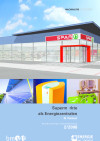
Schriftenreihe
02/2006
M. Peritsch
Deutsch, 442 Seiten
Downloads zur Publikation
First passive-house school reconstruction

Factor 10 refurbishment of the General Secondary School II and Polytechnic School of Schwanenstadt (Upper Austria) with prefabricated wooden façade elements and with a comfort ventilation system.
BIGMODERN Subproject 7: Monitoring concept
Development of a pattern for comprehensive documentation of the project results. The concepts contain amongst others monitoring of energy consumption, resources, costs, functionality and comfort, etc.
Energy system - Industrial region
Analysis of success factors, restrictions and risks on the development and implementation process caused by the system integration of renewable energy technology in industrial regions with higher energy demand.
IEA Energy in Buildings and Communities Programme (EBC TCP)
The Energy in Buildings and Communities Programme by the IEA enables collaborative research and development projects. Thematically, it focuses on integrating energy efficient and sustainable technologies in buildings and communities.
Innovative Use Of Austrian Stove Fitting Technology For A Sustainabl Development

Tile stoves in Austria - Clay stoves in Zimbabwe
Forschungsforum
2/2000
Herausgeber: BMVIT
Englisch, 6 Seiten
Downloads zur Publikation
Energiespeicher Beton

Schriftenreihe
2/2016
K. Krec
Herausgeber: BMVIT
Deutsch, 204 Seiten
Downloads zur Publikation
Smart Cities Tag 2020
16. und 17. Juli 2020
Alpenhotel Gösing, 3221, Gösing an der Mariazellerbahn 4
Bauen mit Hausverstand

Dokumentarfilm
C. Hefner, P. Giczy
Herausgeber: BMVIT
Deutsch, 11 Seiten
Downloads zur Publikation
Bioenergy in Austria
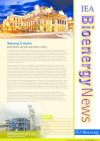
242/2012
Herausgeber: IEA-Bioenergy
Englisch, 8 Seiten
Downloads zur Publikation
Forschungsagenda Solarthermie

Schriftenreihe
14/2010
W. Weiss et al.
Herausgeber: BMVIT
Deutsch, 91 Seiten
Downloads zur Publikation
Technischer Status von Wohnraumlüftungen
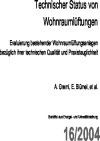
Schriftenreihe
16/2004
A. Greml
Deutsch, 298 Seiten
Downloads zur Publikation
Sanierung ökologischer Freihof Sulz
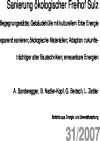
Schriftenreihe
31/2007
A. Sonderegger, B. Nadler-Kopf, G. Bertsch, L. Zettler
Herausgeber: BMVIT
Deutsch, 73 Seiten
Downloads zur Publikation
Neue Veranstaltungen im Herbst
Tagungsband des Startworkshops

Herausgeber: BMVIT
Deutsch, 102 Seiten
Downloads zur Publikation
Neubau ökologisches Gemeindezentrum Ludesch
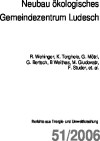
Schriftenreihe
51/2006
R. Wehinger, K. Torghele, G. Mötzl, G. Bertsch, B Weithas, M. Gludovatz, F. Studer, et. al.
Deutsch, 146 Seiten
Downloads zur Publikation
Wandsysteme aus Nachwachsenden Rohstoffen

Schriftenreihe
31/2001
R. Wimmer, H. Hohensinner, L. Janisch, et.al.
Deutsch, 99 Seiten
Downloads zur Publikation
FTE-Strategie zur Althaussanierung
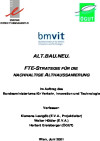
Herausgeber: BMVIT
Deutsch, 40 Seiten
Downloads zur Publikation
Tagungsband des Startworkshops
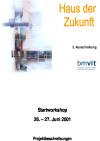
Herausgeber: BMVIT
Deutsch, 20 Seiten
